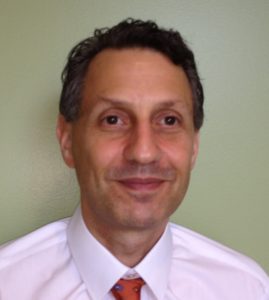by June Kinoshita

The FSHD Clinical Trial Research Network (CTRN), which was launched last year with a $121,000 grant from the FSH Society, has received a UO1 award from the National Institutes of Health. The project will receive $469,642 for the first year. Additional funds, up to a total of nearly $2.7 million, will be released upon reaching annual milestones. The principal investigators are Rabi Tawil, MD, of the University of Rochester, and Jeffrey Statland, MD, of the University of Kansas.
“The support of the FSH Society and a private donor helped us establish the infrastructure necessary to propose such a study, and the continuing support will be essential not just for this study, but for future efforts toward creating new outcome measures, developing new therapies, and training the next generation of FSHD researchers,” said Statland.
The study funded under the UO1 has the overall aim of speeding up drug development for facioscapulohumeral muscular dystrophy (FSHD). There are many drug companies actively working toward therapies for FSHD, but meetings with industry, FSHD researchers, and advocacy groups like the FSH Society have identified several gaps in the tools and infrastructure needed for currently planned and future clinical trials to test potential treatments.
The newly funded study aims to develop two novel “clinical outcome assessments” (COAs). The first is a composite functional outcome measure (FSH-COM), and the second is a method to measure disease-related changes in skeletal muscle using electrical impedance myography (EIM). Previous research funded by the FSH Society has shown these to be promising tools. They now need to be proven to work reliably across different clinical sites before they can be approved as validated measures to use in FSHD clinical trials.
In addition, the UO1-funded project will help researchers better understand how genetic and demographic features are related to disease progression. This is important to enable a researcher to identify a subset of patients who are likely to respond in a way that can be measured by the tools used over the timespan of a given trial. For example, patients who are likely to lose muscle strength in their legs within the next 18 months would be suitable candidates for a two-year trial that is using a walking test as a primary outcome measure.
To achieve these aims, the CTRN will carry out a multicenter, prospective, 18-month study involving 150 volunteers. The data from this study will be made available for any investigator or company pursuing treatments for patients with FSHD.
“Each advance that we make,” Statland noted, “is a collaboration among people with FSHD, advocacy groups like the FSH Society, academic researchers, and industry.”


This is fantastic and just one example of how FSH Society and private donor seed money has blossomed into major research funding. Nice work!
Hi my name is Thomas Cook I was diagnosed at the age of twelve! I’m fourtythree now my legs are like broomsticks from the knees down! I can’t walk without leg braces and a walker can you help me please and thank you!
If you could help me at all it would be greatly appreciated! I have poor circulation from the knees down as well!